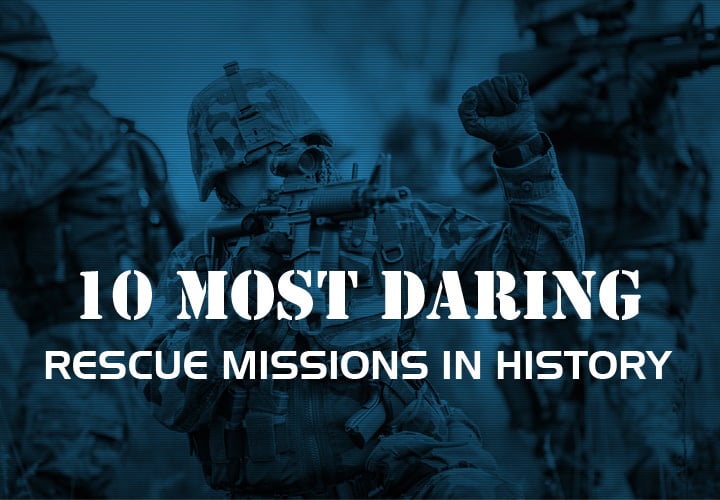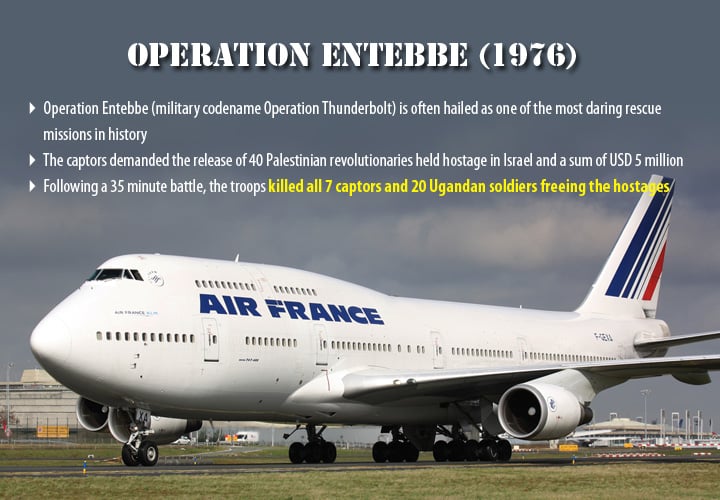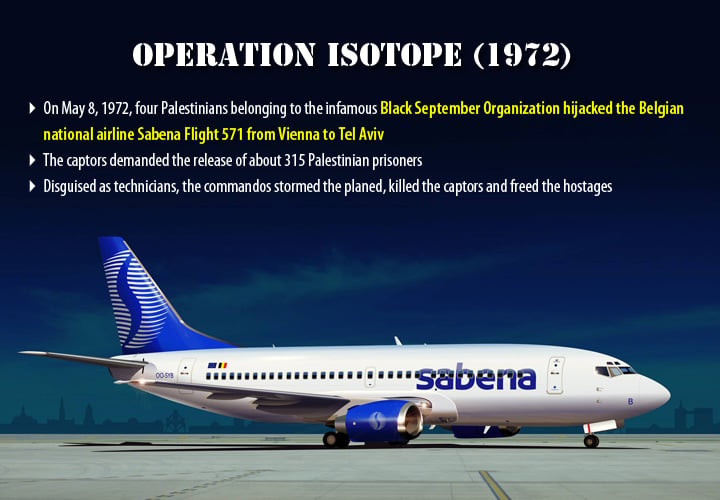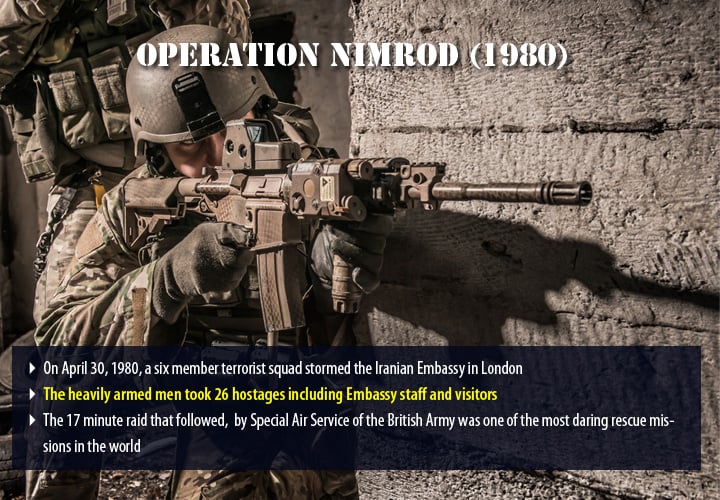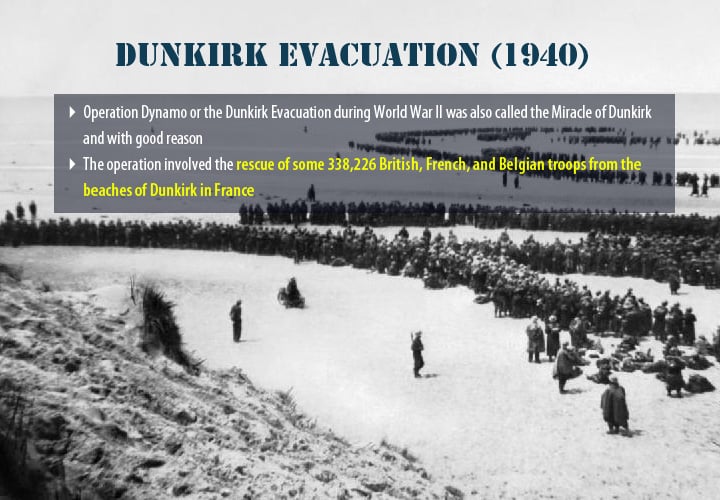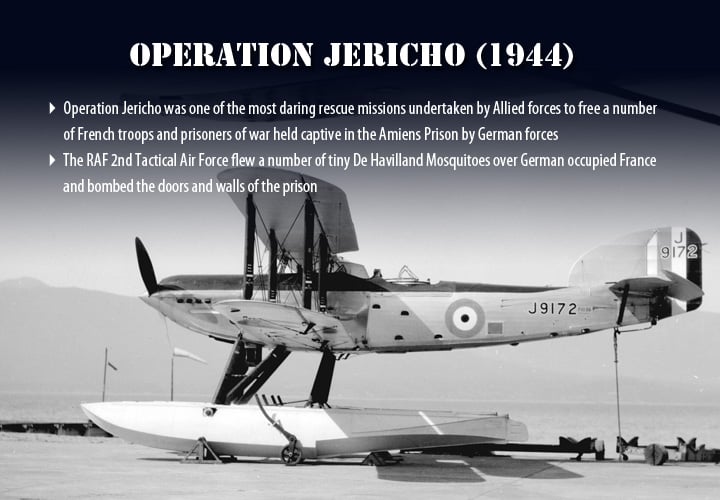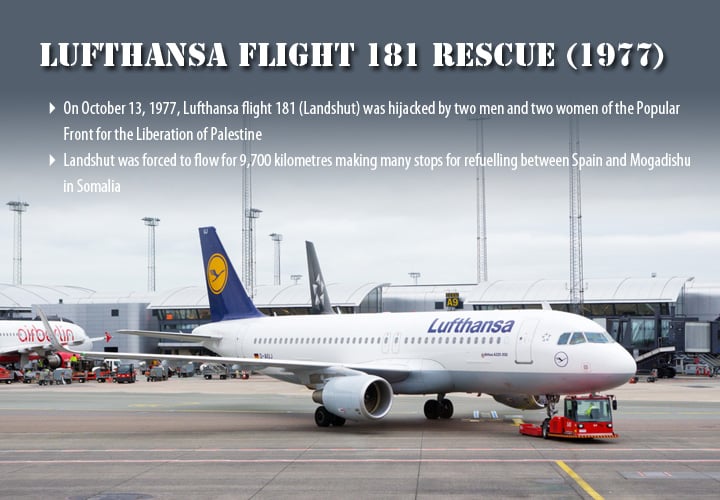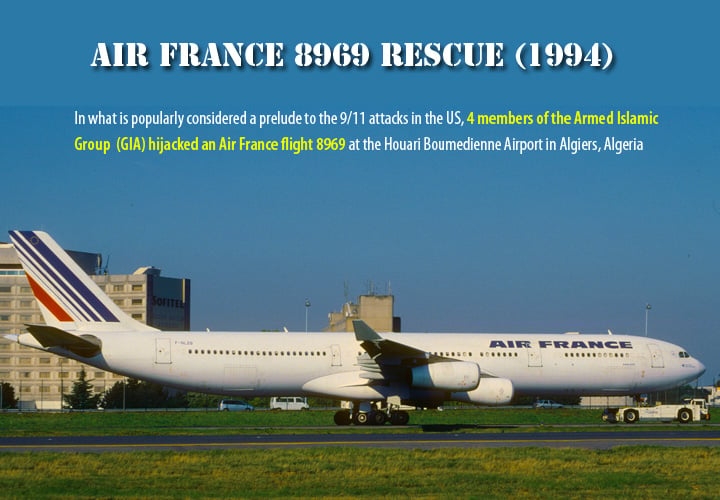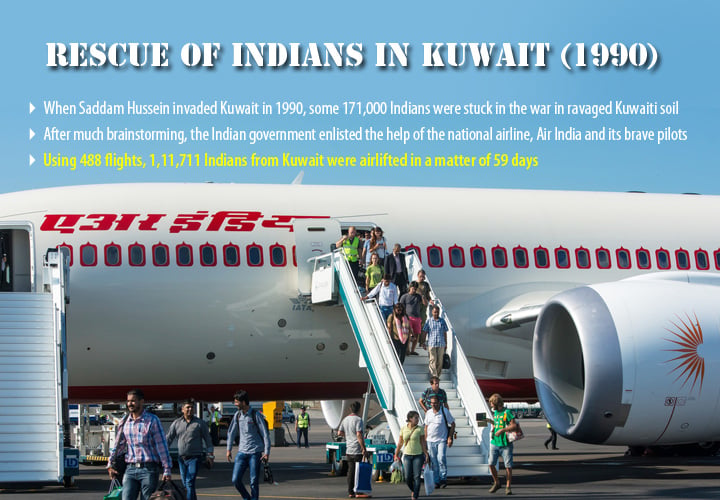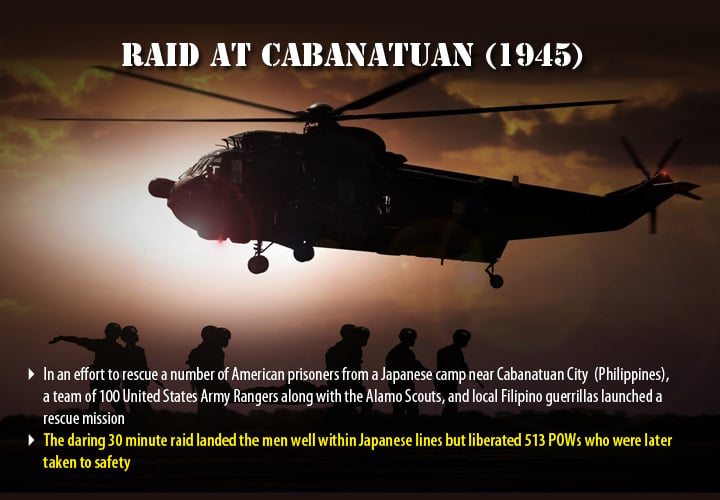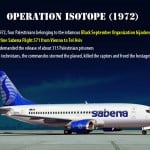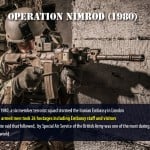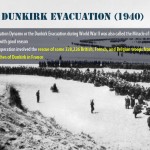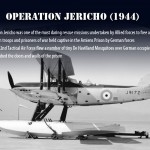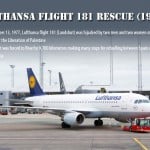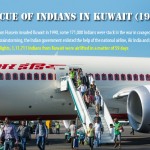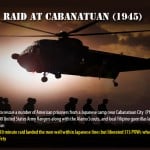Operation Entebbe (1976)
Operation Entebbe (military codename Operation Thunderbolt) is often hailed as one of the most daring rescue missions in history. On June 27, 1976, Air France Flight 139 left Tel Aviv in Israel and after a stop over at Athens in Greece departed for Paris, the French capital. There were 248 passengers and 12 crew members on board when the plane was hijacked by members of the Popular Front for the Liberation of Palestine (PFLP) and Germany’s Baader-Meinhof gang. The plane was first diverted to Benghazi in Libya and later taken to Entebbe Airport in Uganda where President Idi Amin was sympathetic to the hijackers. The PFLP demanded the release of 40 Palestinian revolutionaries held hostage in Israel and a sum of USD 5 million, failing which they threatened to kill the flight crew and the Israeli hostages on board. Most of the others were released. The long drawn negotiations were getting nowhere and the Israelis decided to pull off an incredible rescue mission. Over a 100 commandos were flown in from Israel and stormed the terminal disguised as President Amin’s motorcade. Following a 35-minute battle, the troops killed all 7 captors and 20 Ugandan soldiers freeing the hostages. Three hostages were killed in the crossfire and the Israelis lost Lieutenant Colonel Yonatan Netanyahu.
Operation Isotope (1972)
On May 8, 1972, four Palestinians belonging to the infamous Black September Organization hijacked the Belgian national airline Sabena Flight 571 flying from Vienna to Tel Aviv. The captors demanded the release of about 315 Palestinian prisoners. The plane was diverted to the Ben Gurion Airport (Israel). While pretending to conduct peaceful negotiations with the hijackers, the Israeli government embarked on a rescue mission with a team of 16 commandos from the Sayeret Matkal special forces unit. The plane’s hydraulic system was jammed and the captors were convinced that it needed technical repairs. The commandos then, dressed in white overalls like technicians, stormed the plane. The two male hijackers were killed and the two women captured. Three hostages were injured in the crossfire and one of them died. The team that pulled off this daring operation included Ehud Barak and Benjamin Netanyahu, both of whom went on to become Israeli Prime Ministers.
Operation Nimrod (1980)
On April 30, 1980, a six member terrorist squad belonging to the Democratic Revolutionary Front (Movement) for the Liberation of Arabistan (DRFLA) stormed the Iranian Embassy in London. The heavily armed men took 26 hostages including Embassy staff and visitors. The captors demanded the release of Arab prisoners jailed in Iran. As negotiations stretched into the sixth day, one hostage was killed by the captors who were growing impatient. The British government then sought the help of the Special Air Service (SAS) regiment of the British Army to conduct a rescue operation. The 17 minute raid that followed was one of the most daring, and perhaps the most publicized rescue missions in the world. The SAS entered the building through the roof, killed 5 of the terrorists and captured one. One hostage died during the assault and the remaining were rescued.
Dunkirk Evacuation (1940)
Operation Dynamo or the Dunkirk Evacuation during World War II was also called the Miracle of Dunkirk and with good reason. The operation involved the rescue of some 338,226 British, French, and Belgian troops from the beaches of Dunkirk in France. Following the German invasion of Belgium and Netherlands in May 1940, the Nazi troops advanced to France and the Battle of France resulted in the British Expeditionary Force, Belgian and French forces being surrounded and cut off by the Germans. The BEF immediately launched into a rescue operation across the English Channel and in merely 8 days rescued the 338,226 troops using fishing boats, merchant and cargo boats and pleasure crafts.
Operation Jericho (1944)
The Nazis were infamous for their inhuman and atrocious treatment of prisoners of war during World War II. Operation Jericho was one of the most daring rescue missions undertaken by Allied forces to free a number of French troops and prisoners of war held captive in the Amiens Prison by German forces. On February 18, 1944, the RAF 2nd Tactical Air Force flew a number of tiny De Havilland Mosquitoes over German occupied France and bombed the doors and walls of the prison. Operation Jericho was meant to be an attempt to release French prisoners held captive in the German camp despite the damage to the prison. About 258 prisoners were freed in the operation, but a lack of ability to follow up on the bombing resulted in about two-third of the freed prisoners being recaptured by the Germans.
Lufthansa Flight 181 Rescue (1977)
On October 13, 1977, Lufthansa flight 181 (Landshut) was hijacked by two men and two women of the Popular Front for the Liberation of Palestine. Landshut was forced to fly for 9,700 kilometers making many stops for refueling between Spain and Mogadishu in Somalia. West German counter-terrorist group the GSG9 sought and received support from Somali troops and launched a daring but well planned rescue mission. The German troops forced open the craft and freed all the 86 passengers and 4 crew members (Captain Jürgen Schumann had been shot by the hijackers). Within 5 minutes of the operation, 3 of the 4 hijackers had been neutralized and one had been captured.The operation was code named Feuerzauber (“Fire Magic” in German).
Air France 8969 Rescue (1994)
In what is popularly considered a prelude to the 9/11 attacks in the US, 4 members of the Armed Islamic Group (GIA) hijacked an Air France flight 8969 at the Houari Boumedienne Airport in Algiers, Algeria. Over the next two days the captors killed three of the 232 hostages on board. The hijacking was an act of rebellion by Islamic fundamentalists in Algeria who sought to take over the country against European nations that supported incumbent authorities. The hijackers planned to blow up the plane over the Eiffel Tower and requested permission to fly to Paris. The low levels of fuel forced the plane to land in Marseilles where the French commandos of GIGN were ready to execute a perfect rescue mission. The French commandos stormed the plane and killed three of the four hijackers. The fourth died of gunshot wounds while locked in the cockpit. None of the hostages or GIGN members were fatally wounded.
Rescue of Indians in Kuwait (1990)
Saddam Hussein’s invasion of Kuwait in 1990 is not an incident that the world will easily forget. What is not widely known, though, is that some 171,000 Indians were stuck in war-ravaged Kuwait. All Indian efforts to evacuate nationals with the help of military aircrafts were foiled due to lack of airspace clearance and due to a UN embargo. Lack of travel documents and proper communication lines compounded the problems. After much brainstorming, the Indian government enlisted the help of the national airline, Air India and its brave pilots. The Indians in Kuwait were moved to Jordan and travel documents expedited. Using 488 flights, 1,11,711 Indians from Kuwait were airlifted in a matter of 59 days. Indian military leaders meticulously planned the operation and Air India executed it with clockwork precision. The Guinness Book of World Records calls this the largest civilian evacuation in history, but its also undoubtedly one of the most daring rescue missions there is.
Raid at Cabanatuan (1945)
Almost a year before World War II finally ended, even as the Allied troops started to advance into Japanese territory, on October 20, 1944, the Japanese high command issued instructions that all prisoners of war should be killed rather than risk their liberation. In Palawan, about 140 POWs were brutally burnt to death. In an effort to rescue a number of American prisoners from a Japanese camp near Cabanatuan City (Philippines), a team of 100 United States Army Rangers along with the Alamo Scouts, and local Filipino guerrillas launched a rescue mission. Aiding them was an Allied P-61 Black Widow craft sent in for distraction. The daring 30-minute raid landed the men well within Japanese lines but liberated 513 POWs who were later taken to safety. Hundreds of Japanese troops were killed in the operation.
Moscow Theatre Hostage Crisis (2002)
On October 23, 2002, about 40 attackers (from Chechnya) stormed the Dubrovka Theater during a performance of the musical, Nord-Ost, and held over 850 members of the audience captive. The Chechens demanded the immediate withdrawal of the Russian forces from Chechnya and an end to the Second Chechen war. A few foreign nationals, children, and hostages in need of health treatment were released and yet the number of hostages and the huge quantity of explosives inside the theater, dissuaded rescuers. Following a three day standoff, the Russian security forces from the Federal Security Service (FSB) and the Alpha and Vega Groups made a drastic move. They pumped an undisclosed sleeping gas into the building’s ventilation system. As hostages and captors alike started to pass out, the forces stormed the building and shot the Chechens. Though one of the most daring missions, this is also one of the highly criticized rescues attempted around the world. About 130 hostages died due to the effects of the gas and due to ineffective medical support. The Russian government refused to disclose the name of the gas making treatment difficult.


